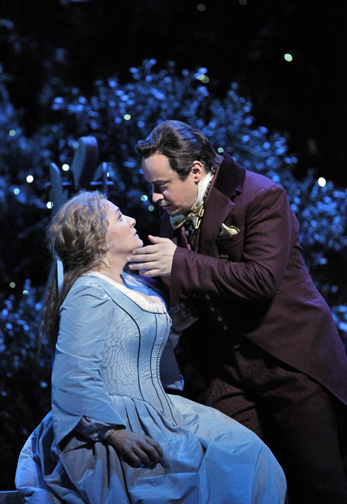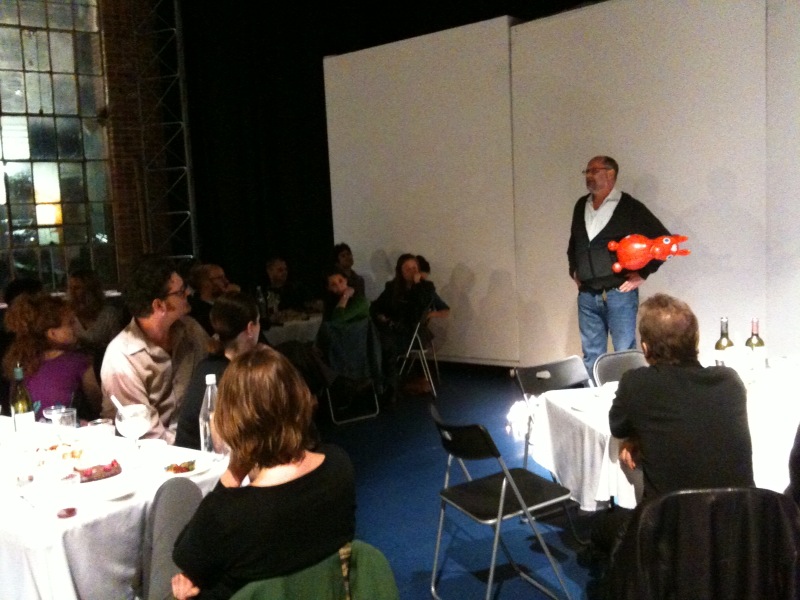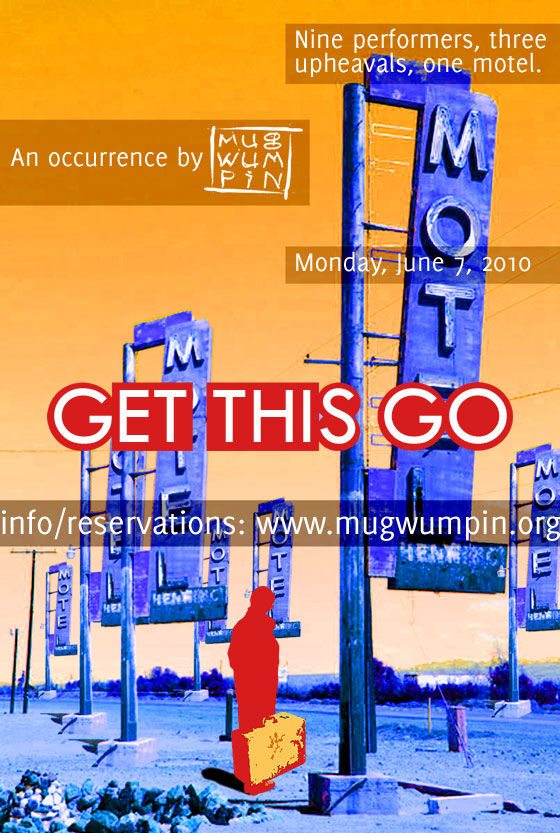 The San Francisco Opera‘s strategy these days seems to be to throw all its cash behind big name stars and put on a bunch of either heavy duty or crowd-pleasing operas in a very traditional manner.
The San Francisco Opera‘s strategy these days seems to be to throw all its cash behind big name stars and put on a bunch of either heavy duty or crowd-pleasing operas in a very traditional manner.
I can see why General Director David Gockley is adopting this approach: in these economically tough times, bums on seats are what counts. You certainly don’t want to give the predominantly aging, white and monied audience any reason not to splash out on those premium orchestra seats by rocking the boat with any minimalist set designs, experimental approaches to direction and singers who haven’t already performed lead roles at the Met or La Scala.
Last night’s performance of Gounod’s Faust perfectly illustrated the strategy. But unlike the Girl of the Golden West which I could forgive for pandering to the audience because of its pure sense of fun, Faust came across mainly as a ponderous yawn fest. The production characterized SF Opera’s “play its safe” modus operandi in the worst possible way.
Granted, the singing was terrific and the lead performers (big guns Stefano Secco, Patricia Racette and John Relyea) were magnetic to watch, at least for a while. But the dull mise-en-scene, stiff chorus numbers and clunking, ugly period costumes faux-crumbling European scenery of this Lyric Opera of Chicago production dragged Gounod’s music down.
I really hope that the San Francisco Opera, which has had some innovative moments over the last decade, starts innovating again soon. Opera companies shouldn’t have to choose between paying top dollar for big name stars and mounting productions that feel fresh and relevant.

 Yesterday afternoon, I spent a wonderful hour or so at Frankie’s (aka 21 Club). Frankie’s is a dive bar in the Tenderloin neighborhood of San Francisco at the corner of Turk and Taylor Streets. Few tourists venture there. I was at Frankie’s at the invitation of Elvin Padilla, Executive Director of the
Yesterday afternoon, I spent a wonderful hour or so at Frankie’s (aka 21 Club). Frankie’s is a dive bar in the Tenderloin neighborhood of San Francisco at the corner of Turk and Taylor Streets. Few tourists venture there. I was at Frankie’s at the invitation of Elvin Padilla, Executive Director of the The slow food movement has become very much a part of Bay Area culture, alongside organic and local approaches to cuisine. Besides a few “No MSG” signs, Chinatown, however, has been somewhat slow to embrace the slow.
The slow food movement has become very much a part of Bay Area culture, alongside organic and local approaches to cuisine. Besides a few “No MSG” signs, Chinatown, however, has been somewhat slow to embrace the slow. You can never predict what will happen to a small theatre in San Francisco. When I last wrote about
You can never predict what will happen to a small theatre in San Francisco. When I last wrote about  When Deborah Voigt appeared on stage in a pair of red leather chaps astride a horse in the final scene of the
When Deborah Voigt appeared on stage in a pair of red leather chaps astride a horse in the final scene of the  What’s the formula for staging a successful cultural salon? I’ve been putting them on and going to them for several years now and I feel like I should have figured out the formula. The truth is, there is no formula. Sometimes, soirees that are carefully orchestrated with many beautiful features such as live performances, well-crafted discussion points, a convivial space, good food and wine and a great, lively crowd go horribly awry. Sometimes, you turn up without having much of a clue about who’s going to be there, what’s going to be discussed and little more than a baguette and a few cheap bottles of plonk to entertain people with and the proceedings progress marvelously. It’s a bit of a crapshoot really.
What’s the formula for staging a successful cultural salon? I’ve been putting them on and going to them for several years now and I feel like I should have figured out the formula. The truth is, there is no formula. Sometimes, soirees that are carefully orchestrated with many beautiful features such as live performances, well-crafted discussion points, a convivial space, good food and wine and a great, lively crowd go horribly awry. Sometimes, you turn up without having much of a clue about who’s going to be there, what’s going to be discussed and little more than a baguette and a few cheap bottles of plonk to entertain people with and the proceedings progress marvelously. It’s a bit of a crapshoot really. If you’re going to stage a theatrical happening in a non-traditional location with parts of the performance going on simultaneously in multiple spaces, you need to think carefully not only about the relationship between the setting and the production, but also about the audience’s experience from a theatrical perspective.
If you’re going to stage a theatrical happening in a non-traditional location with parts of the performance going on simultaneously in multiple spaces, you need to think carefully not only about the relationship between the setting and the production, but also about the audience’s experience from a theatrical perspective. One of the many delights of experiencing the music of the
One of the many delights of experiencing the music of the  One of my editors sent me
One of my editors sent me  With her new drama In the Wake at
With her new drama In the Wake at  There’s nothing like teaching a class on something to make you think more clearly about it.
There’s nothing like teaching a class on something to make you think more clearly about it.